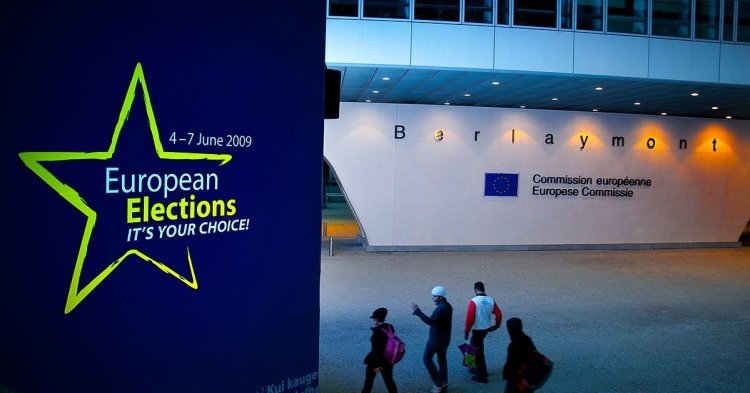As the world gears up for the 2024 European elections, certain cyber risks could potentially threaten the integrity and security of the electoral process. Such risks may affect the legitimacy of the democratic process, not only on the days of the elections (voting procedure) but also before (promotional campaigns, voters databases) and after them (results). This article examines the core cyber threats and provides insights into potential strategies to fortify the electoral cyber landscape.
Manipulation or disruption of voter registration databases
It does not matter if your country has a paper voting system or an electronic one: in both cases, voter registration databases are essential for determining the eligibility of voters to participate in elections. Any manipulation or disruption of these databases could result in eligible voters being denied their right to vote or ineligible individuals being allowed to vote. To tackle this threat, election officials should not only conduct regular checks and monitoring but also establish strong access controls. Enabling multi-factor authentication (MFA), updating software, encrypting sensitive data and training employees on cybersecurity best practices, are measures that could add an extra layer of security, minimising the risk of unauthorised access or tampering.
Phishing campaigns targeting election officials and political parties
We are all aware of these spam emails that end up in our inboxes. Some of them though, are not only spam but could potentially steal our data and obtain sensitive information. Now imagine this, but addressed to a political party or staff that works for the elections, who hold lists of numerous supporters and voters alongside their data. Addressing this threat requires more than just cybersecurity training for election staff, candidates and political parties: it calls for a proactive response. Implementing email filtering systems and adopting MFA reduces the chances of unauthorised access through phishing attempts. MFA should be enabled for all election-related accounts and systems to enhance security. Another example would be the behaviour-based email filtering systems: such systems analyse the behaviour of emails rather than just their content or attachments. These systems use machine learning algorithms to understand normal patterns of communication within an organization and flag anomalies that could indicate phishing attempts.
Misinformation that could alter election results
Clickbait articles, non-verified sources, social media trolls, fake posts: we have all seen them while navigating the web. The spread of false information through various channels poses a huge risk, capable of swaying voter opinions and manipulating election outcomes. Voters become disillusioned with the political process and lose confidence in the fairness and legitimacy of elections. To confront this risk, a multifaceted strategy is imperative, involving not only public awareness campaigns but also collaborative efforts with social media platforms. Media literacy initiatives play a crucial role, in empowering voters to critically evaluate the information landscape. By equipping voters with the skills to critically evaluate media content, such initiatives contribute to the resilience of democratic societies and the protection of electoral integrity.
Malware attacks on election IT infrastructure
Which antivirus could secure the voting systems from software such as trojans, viruses, spyware and ransomware? Such software targets the core of the electronic voting systems and is designed to operate stealthily without leaving traces. The need for a reliable antivirus program is crucial in preventing malware attacks, but only when combined with routine software updates and patches, firewalls and remote access only through VPN. Moreover, conducting thorough security assessments contributes to fortifying the overall resilience of election systems.
Traffic spikes and systems crashing on election day
Imagine when your favourite band comes to town, and the sale of tickets starts on Monday at 11. Seconds after, the tickets website is down, because everyone logged in to buy a ticket. Now imagine this but on EU elections day: such traffic spikes can occur due to high voter turnout, last-minute voter registrations, cyberattacks, or technical glitches. As a result, the system crashes and we experience slowdowns, or even denial of service, disrupting online voter registration and result reporting. Strategies to tackle this threat involve proactive traffic monitoring and contingency plans. The websites need to be able to ride the wave when a traffic spike hits, rather than drown beneath it. Developing a solid cloud hosting solution, predicting surges, and implementing real-time performance monitoring to handle sudden traffic spikes become indispensable tools for maintaining the functionality of election infrastructure.
The human factor
Whether intentional or unintentional, insider threats originating from election personnel can compromise the entire electoral process. Beyond background checks and limited access, election authorities must implement vigilant hiring and monitoring processes. Swift detection and response to potential insider threats are critical in preserving the legitimacy of elections. Furthermore, the complex challenges posed by non-state actors attempting to interfere in elections through cyber-attacks call for a collaborative response. Governments, election authorities, and cybersecurity organisations must join forces in sharing threat intelligence and strengthening diplomatic efforts. Developing and regularly updating comprehensive incident response plans ensures that election authorities can swiftly and efficiently address any cybersecurity incidents.
Conclusion
Manipulation of databases, phishing, misinformation, malware attacks, traffic spikes and humans themselves are possible cyber risks that could threaten the integrity of elections. They all demand a dynamic and holistic approach to be confronted. By comprehensively understanding and mitigating these risks through innovative measures such as the ones mentioned above, election authorities and political parties could strengthen the resilience of democratic processes. As the 2024 EU elections approach, a commitment to implementing these strategies becomes necessary in safeguarding the foundational principles of democracy and enhancing citizens’ trust in the legitimacy of electoral systems.


Follow the comments: |
|
